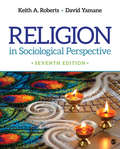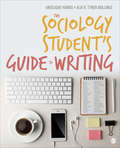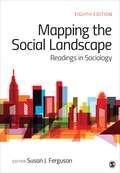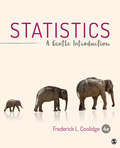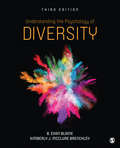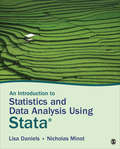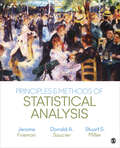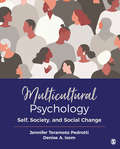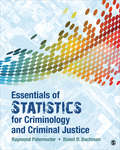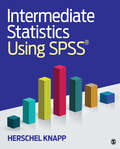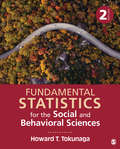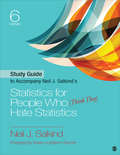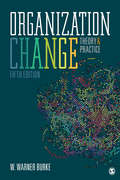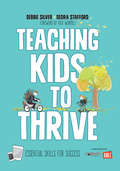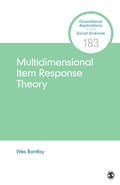- Table View
- List View
Religion in Sociological Perspective
by Keith A. Roberts David A. Yamane<!-- /* Font Definitions */ @font-face {font-family:"Cambria Math"; panose-1:2 4 5 3 5 4 6 3 2 4; mso-font-charset:0; mso-generic-font-family:roman; mso-font-pitch:variable; mso-font-signature:-536870145 1107305727 0 0 415 0;} @font-face {font-family:Tahoma; panose-1:2 11 6 4 3 5 4 4 2 4; mso-font-charset:0; mso-generic-font-family:swiss; mso-font-pitch:variable; mso-font-signature:-520081665 -1073717157 41 0 66047 0;} /* Style Definitions */ p.MsoNormal, li.MsoNormal, div.MsoNormal {mso-style-unhide:no; mso-style-qformat:yes; mso-style-parent:""; margin:0in; margin-bottom:.0001pt; mso-pagination:widow-orphan; font-size:10.0pt; font-family:"Tahoma",sans-serif; mso-fareast-font-family:"Times New Roman"; mso-bidi-font-family:"Times New Roman";} .MsoChpDefault {mso-style-type:export-only; mso-default-props:yes; font-size:10.0pt; mso-ansi-font-size:10.0pt; mso-bidi-font-size:10.0pt;}size:8.5in 11.0in; margin:1.0in 1.0in 1.0in 1.0in; mso-header-margin:.5in; mso-footer-margin:.5in; mso-paper-source:0;} div.WordSection1 {page:WordSection1;} Religion in Sociological Perspective introduces you to the systems of meaning, structure, and belonging that make up the complex social phenomena we know as religion. Authors Keith A. Roberts and David Yamane use an active learning approach to illustrate the central theories and methods of research in the sociology of religion and show you how to apply these analytical tools to new groups they encounter. The Seventh Edition departs from previous editions by emphasizing that the sociology of religion is an ongoing conversation among scholars in dialogue with existing scholarship and the social world. This perspective is established in the new second chapter, &“Historical Development of the Sociology of Religion.&” Other chapters feature important voices from the past alongside the views of contemporary sociologists, and conclude with a glimpse of where the sociology of religion might be heading in the future. At every opportunity, the text has been enriched by research and examples that are meant to challenge parochial limits in the sociology of religion, pushing beyond Christianity, congregations, beliefs, national borders (especially the United States), and even beyond religion itself (to take nonreligion more seriously).
The Sociology Student's Guide to Writing: Moody: Aging 9e + Harris: The Sociology Student's Guide To Writing, 2e
by Dr Angelique C. Harris Alia R. Tyner-MullingsThe Sociology Student's Guide to Writing, by Angelique Harris and Alia R. Tyner-Mullings, is a brief, economical reference work that gives practical advice about the writing tasks and issues that undergraduate students face in their first sociology courses. Along with more traditional topics, it incorporates valuable information about composing emails, writing for online forums, and using technology for information-gathering and note-taking. Used by itself or in combination with other texts, this book will increase the quality of student writing and enhance their knowledge of how sociologists communicate in writing.
The Sociology Student's Guide to Writing: Moody: Aging 9e + Harris: The Sociology Student's Guide To Writing, 2e
by Alia R. Tyner-Mullings Dr Angelique C. HarrisThe Sociology Student's Guide to Writing, by Angelique Harris and Alia R. Tyner-Mullings, is a brief, economical reference work that gives practical advice about the writing tasks and issues that undergraduate students face in their first sociology courses. Along with more traditional topics, it incorporates valuable information about composing emails, writing for online forums, and using technology for information-gathering and note-taking. Used by itself or in combination with other texts, this book will increase the quality of student writing and enhance their knowledge of how sociologists communicate in writing.
Mapping The Social Landscape: Readings in Sociology
by Susan J. Joann FergusonNow with SAGE Publishing, Mapping the Social Landscape: Readings in Sociology is one of the most established and widely-used anthologies for Introductory Sociology. Susan J. Ferguson selects, edits, and introduces 58 readings representing a plurality of voices and views within sociology. <P><P>The selections include classic statements from great thinkers like C. Wright Mills, Karl Marx, Howard Becker, and Max Weber, as well as the works of contemporary scholars who address current social issues. Many of the readings integrate questions of diversity, helping students see the interrelationships among race-ethnicity, social class, and gender, and understand how these relationships have shaped the experiences of all people in society.
Statistics: A Gentle Introduction
by Frederick L. CoolidgeThe Fourth Edition of Statistics: A Gentle Introduction shows students that an introductory statistics class doesn’t need to be difficult or dull. This text minimizes students’ anxieties about math by explaining the concepts of statistics in plain language first, before addressing the math. Each formula within the text has a step-by-step example to demonstrate the calculation so students can follow along. Only those formulas that are important for final calculations are included in the text so students can focus on the concepts, not the numbers. A wealth of real-world examples and applications gives a context for statistics in the real world and how it helps us solve problems and make informed choices. New to the Fourth Edition are sections on working with big data, new coverage of alternative non-parametric tests, beta coefficients, and the "nocebo effect," discussions of p values in the context of research, an expanded discussion of confidence intervals, and more exercises and homework options under the new feature "Test Yourself." Included with this title: The password-protected Instructor Resource Site (formally known as SAGE Edge) offers access to all text-specific resources, including a test bank and editable, chapter-specific PowerPoint® slides.
Statistics: A Gentle Introduction
by Frederick L. CoolidgeThe Fourth Edition of Statistics: A Gentle Introduction shows students that an introductory statistics class doesn’t need to be difficult or dull. This text minimizes students’ anxieties about math by explaining the concepts of statistics in plain language first, before addressing the math. Each formula within the text has a step-by-step example to demonstrate the calculation so students can follow along. Only those formulas that are important for final calculations are included in the text so students can focus on the concepts, not the numbers. A wealth of real-world examples and applications gives a context for statistics in the real world and how it helps us solve problems and make informed choices. New to the Fourth Edition are sections on working with big data, new coverage of alternative non-parametric tests, beta coefficients, and the "nocebo effect," discussions of p values in the context of research, an expanded discussion of confidence intervals, and more exercises and homework options under the new feature "Test Yourself." Included with this title: The password-protected Instructor Resource Site (formally known as SAGE Edge) offers access to all text-specific resources, including a test bank and editable, chapter-specific PowerPoint® slides.
Understanding the Psychology of Diversity
by B. Evan Blaine Kimberly J. BrenchleyThe updated Third Edition of this best seller presents a highly readable examination of diversity from a unique psychological perspective to teach students how to understand social and cultural differences in today’s society. By exploring how individuals construct their view of social diversity and how they are defined and influenced by it, author B. Evan Blaine and new coauthor Kimberly J. McClure Brenchley present all that psychology has to offer on this critically important topic. The new edition features chapters on traditional topics such as categorization, stereotypes, sexism, racism, and sexual prejudice, in addition to chapters on nontraditional diversity topics such as weightism, ageism, and social stigma. Integrated throughout the text are applications of these topics to timely social issues.
An Introduction to Statistics and Data Analysis Using Stata®: From Research Design to Final Report
by Lisa Daniels Nicholas W. MinotAn Introduction to Statistics and Data Analysis Using Stata® by Lisa Daniels and Nicholas Minot provides a step-by-step introduction for statistics, data analysis, or research methods classes with Stata. Concise descriptions emphasize the concepts behind statistics for students rather than the derivations of the formulas. With real-world examples from a variety of disciplines and extensive detail on the commands in Stata, this text provides an integrated approach to research design, statistical analysis, and report writing for social science students.
An Introduction to Statistics and Data Analysis Using Stata®: From Research Design to Final Report
by Lisa Daniels Nicholas W. MinotAn Introduction to Statistics and Data Analysis Using Stata® by Lisa Daniels and Nicholas Minot provides a step-by-step introduction for statistics, data analysis, or research methods classes with Stata. Concise descriptions emphasize the concepts behind statistics for students rather than the derivations of the formulas. With real-world examples from a variety of disciplines and extensive detail on the commands in Stata, this text provides an integrated approach to research design, statistical analysis, and report writing for social science students.
Principles & Methods of Statistical Analysis
by Jerome Frieman Donald A. Saucier Mr Stuart S. MillerThis unique intermediate/advanced statistics text uses real research on antisocial behaviors, such as cyberbullying, stereotyping, prejudice, and discrimination, to help readers across the social and behavioral sciences understand the underlying theory behind statistical methods. By presenting examples and principles of statistics within the context of these timely issues, authors Jerome Frieman, Donald A. Saucier, and Stuart S. Miller show how the results of analyses can be used to answer research questions. New techniques for data analysis and a wide range of topics are covered, including how to deal with “messy data” and the importance of engaging in exploratory data analysis.
Multicultural Psychology: Self, Society, and Social Change
by Jennifer Teramoto Pedrotti Denise A. IsomCombining theory and history with an active approach rooted in self-reflection, Multicultural Psychology applies a framework of self-awareness and social justice to foundational and current topics across Multicultural Psychology studies today. Multicultural Psychology focuses on identity and its social context to help students view culture not just as a minority issue, but a way of understanding all human experiences. Multicultural Psychology will help students apply concepts to their own lives at point of learning, to assess their own awareness and progress, and to consider their own role and ability to engage in social change. With this balanced approach, Multicultural Psychology helps students entering the course with varied levels of cultural and diversity awareness to understand their individual and social cultural contexts, to gain awareness of their interactions with others, and to understand the intersections that occur with other cultures across their lives and careers.
Multicultural Psychology: Self, Society, and Social Change
by Jennifer Teramoto Pedrotti Denise A. IsomCombining theory and history with an active approach rooted in self-reflection, Multicultural Psychology applies a framework of self-awareness and social justice to foundational and current topics across Multicultural Psychology studies today. Multicultural Psychology focuses on identity and its social context to help students view culture not just as a minority issue, but a way of understanding all human experiences. Multicultural Psychology will help students apply concepts to their own lives at point of learning, to assess their own awareness and progress, and to consider their own role and ability to engage in social change. With this balanced approach, Multicultural Psychology helps students entering the course with varied levels of cultural and diversity awareness to understand their individual and social cultural contexts, to gain awareness of their interactions with others, and to understand the intersections that occur with other cultures across their lives and careers.
Essentials of Statistics for Criminology and Criminal Justice: Paternoster: Essentials Of Statistics For Criminology And Criminal Justice + Spss 23. 0
by Raymond Paternoster Ronet D. BachmanEssentials of Statistics for Criminology and Criminal Justice helps students understand the vital role that research and statistics play in the study of criminology and criminal justice by showing them how to conduct and interpret statistics in real-world settings with a step-by-step approach to solving problems. This practical, applied approach offers students the fundamentals of descriptive and inferential statistics in a concise and easy-to-understand format—avoiding complicated proofs and discussions of statistical theory. The examples and case studies provide relevant examples for criminology and criminal justice students, and deal with contemporary issues related to crime, corrections, police, and the judicial system. Students will not only learn about the “how to” in statistics, but they will also recognize its importance in today’s criminal justice system.
Essentials of Statistics for Criminology and Criminal Justice: Paternoster: Essentials Of Statistics For Criminology And Criminal Justice + Spss 23. 0
by Raymond Paternoster Ronet D. BachmanEssentials of Statistics for Criminology and Criminal Justice helps students understand the vital role that research and statistics play in the study of criminology and criminal justice by showing them how to conduct and interpret statistics in real-world settings with a step-by-step approach to solving problems. This practical, applied approach offers students the fundamentals of descriptive and inferential statistics in a concise and easy-to-understand format—avoiding complicated proofs and discussions of statistical theory. The examples and case studies provide relevant examples for criminology and criminal justice students, and deal with contemporary issues related to crime, corrections, police, and the judicial system. Students will not only learn about the “how to” in statistics, but they will also recognize its importance in today’s criminal justice system.
Intermediate Statistics Using SPSS
by Herschel KnappWhat statistical test should I use for this kind of data? How do I set up the data? What parameters should I specify when ordering the test? How do I interpret the results? Herschel Knapp's friendly and approachable guide to real-world statistics answers these questions. Intermediate Statistics Using SPSS is not about abstract statistical theory or the derivation or memorization of statistical formulas–it is about applied statistics. With jargon-free language and clear processing instructions, this text covers the most common statistical functions–from basic to more advanced. Practical exercises at the conclusion of each chapter offer students an opportunity to process viable data sets, write cohesive abstracts in APA style, and build a thorough comprehension of the statistical process. You will learn by doing with this truly practical approach to statistics.
Intermediate Statistics Using SPSS
by Herschel KnappWhat statistical test should I use for this kind of data? How do I set up the data? What parameters should I specify when ordering the test? How do I interpret the results? Herschel Knapp's friendly and approachable guide to real-world statistics answers these questions. Intermediate Statistics Using SPSS is not about abstract statistical theory or the derivation or memorization of statistical formulas–it is about applied statistics. With jargon-free language and clear processing instructions, this text covers the most common statistical functions–from basic to more advanced. Practical exercises at the conclusion of each chapter offer students an opportunity to process viable data sets, write cohesive abstracts in APA style, and build a thorough comprehension of the statistical process. You will learn by doing with this truly practical approach to statistics.
Fundamental Statistics for the Social and Behavioral Sciences
by Howard T. TokunagaFundamental Statistics for the Social and Behavioral Sciences, Second Edition places statistics within the research process, illustrating how they are used to answer questions and test ideas. Students learn not only how to calculate statistics, but also how to interpret and communicate the results of statistical analyses in light of a study’s research hypothesis. Featuring accessible writing and well-integrated research examples, the book gives students a greater understanding of how research studies are conceived, conducted, and communicated. New and Proven Features Updated data sets and research examples address real-world issues and topics across the social and behavioral sciences, illustrating the use of statistical procedures to test research questions and hypotheses. Significantly expanded discussion of linear and multiple regression and correlation now gives regression its own separate chapter. Thorough presentation of formulas, hand calculations, and the presentation of visual data enable mastery of key techniques and prove especially helpful in flipped or online classes. In-chapter learning checks and end-of-chapter exercises give students an opportunity to continually assess their understanding. Screenshots of statistical calculations using IBM® SPSS® Statistics at the end of chapters help students learn to use SPSS software and interpret output. Original SAGE videos for each chapter, featuring author Howard K. Tokunaga, bring concepts to life and appeal to diverse learners.
Fundamental Statistics for the Social and Behavioral Sciences
by Howard T. TokunagaFundamental Statistics for the Social and Behavioral Sciences, Second Edition places statistics within the research process, illustrating how they are used to answer questions and test ideas. Students learn not only how to calculate statistics, but also how to interpret and communicate the results of statistical analyses in light of a study’s research hypothesis. Featuring accessible writing and well-integrated research examples, the book gives students a greater understanding of how research studies are conceived, conducted, and communicated. New and Proven Features Updated data sets and research examples address real-world issues and topics across the social and behavioral sciences, illustrating the use of statistical procedures to test research questions and hypotheses. Significantly expanded discussion of linear and multiple regression and correlation now gives regression its own separate chapter. Thorough presentation of formulas, hand calculations, and the presentation of visual data enable mastery of key techniques and prove especially helpful in flipped or online classes. In-chapter learning checks and end-of-chapter exercises give students an opportunity to continually assess their understanding. Screenshots of statistical calculations using IBM® SPSS® Statistics at the end of chapters help students learn to use SPSS software and interpret output. Original SAGE videos for each chapter, featuring author Howard K. Tokunaga, bring concepts to life and appeal to diverse learners.
Study Guide to Accompany Neil J. Salkind's Statistics for People Who (Think They) Hate Statistics
by Dr Neil J. SalkindThe Study Guide to Accompany Neil J. Salkind's Statistics for People Who (Think They) Hate Statistics, Sixth Edition includes chapter outlines; chapter summaries; learning objectives; key terms; exercises; true/false, multiple choice, and essay questions; as well as answers to all questions. The guide has been updated to match the organization of Salkind’s text and includes activities for the book's new Chapter 19: Data Mining: An Introduction to Getting the Most Out of Your BIG Data.
Study Guide to Accompany Neil J. Salkind's Statistics for People Who (Think They) Hate Statistics
by Dr Neil J. SalkindThe Study Guide to Accompany Neil J. Salkind's Statistics for People Who (Think They) Hate Statistics, Sixth Edition includes chapter outlines; chapter summaries; learning objectives; key terms; exercises; true/false, multiple choice, and essay questions; as well as answers to all questions. The guide has been updated to match the organization of Salkind’s text and includes activities for the book's new Chapter 19: Data Mining: An Introduction to Getting the Most Out of Your BIG Data.
Organization Change: Theory and Practice
by W. Warner BurkeChange is a constant in today's organizations. Leaders, managers, and employees at all levels must understand both how to implement planned changed and effectively handle unexpected change. The Fifth Edition of the Organization Change: Theory and Practice provides an eye-opening exploration into the nature of change by presenting the latest evidence-based research to discuss a range of theories, models, and perspectives on organization change. Bestselling author, W. Warner Burke, skillfully connects theory to practice with modern cases of effective and ineffective organization change, recent examples of transformational leadership and planned and revolutionary change, and best practices to successfully influence change. This fully-updated new edition also includes a new chapter on healthcare and government organizations, offering practical applications for non-profit organizations.
Organization Change: Theory and Practice
by W. Warner BurkeChange is a constant in today's organizations. Leaders, managers, and employees at all levels must understand both how to implement planned changed and effectively handle unexpected change. The Fifth Edition of the Organization Change: Theory and Practice provides an eye-opening exploration into the nature of change by presenting the latest evidence-based research to discuss a range of theories, models, and perspectives on organization change. Bestselling author, W. Warner Burke, skillfully connects theory to practice with modern cases of effective and ineffective organization change, recent examples of transformational leadership and planned and revolutionary change, and best practices to successfully influence change. This fully-updated new edition also includes a new chapter on healthcare and government organizations, offering practical applications for non-profit organizations.
Teaching Kids to Thrive: Essential Skills for Success
by Debbie Thompson Silver Ms Dedra A. StaffordThere’s more to student success than standards and test scores… Integrating Social and Emotional Learning into a curriculum has been shown to increase personal and school-wide growth. With lifelong success the goal over simply meeting academic thresholds, Teaching Kids to Thrive presents strategies, activities, and stories in an approachable way to develop responsible, self-motivated learners. Uniting social, academic, and self-skills this instrumental resource offers benefits to students such as: Using mindfulness strategies to help students tap their inner strengths Learning to self-regulate and control other executive brain functions Developing growth mindsets along with perseverance and resilience Cultivating a sense of responsibility, honesty, and integrity Encouraging a capacity for empathy and gratitude
Teaching Kids to Thrive: Essential Skills for Success
by Debbie Thompson Silver Ms Dedra A. StaffordThere’s more to student success than standards and test scores… Integrating Social and Emotional Learning into a curriculum has been shown to increase personal and school-wide growth. With lifelong success the goal over simply meeting academic thresholds, Teaching Kids to Thrive presents strategies, activities, and stories in an approachable way to develop responsible, self-motivated learners. Uniting social, academic, and self-skills this instrumental resource offers benefits to students such as: Using mindfulness strategies to help students tap their inner strengths Learning to self-regulate and control other executive brain functions Developing growth mindsets along with perseverance and resilience Cultivating a sense of responsibility, honesty, and integrity Encouraging a capacity for empathy and gratitude
Multidimensional Item Response Theory (Quantitative Applications in the Social Sciences #183)
by Wes BonifaySeveral decades of psychometric research have led to the development of sophisticated models for multidimensional test data, and in recent years, multidimensional item response theory (MIRT) has become a burgeoning topic in psychological and educational measurement. Considered a cutting-edge statistical technique, the methodology underlying MIRT can be complex, and therefore doesn&’t receive much attention in introductory IRT courses. However author Wes Bonifay shows how MIRT can be understood and applied by anyone with a firm grounding in unidimensional IRT modeling. His volume includes practical examples and illustrations, along with numerous figures and diagrams. Multidimensional Item Response Theory includes snippets of R code interspersed throughout the text (with the complete R code included on an accompanying website) to guide readers in exploring MIRT models, estimating the model parameters, generating plots, and implementing the various procedures and applications discussed throughout the book.
